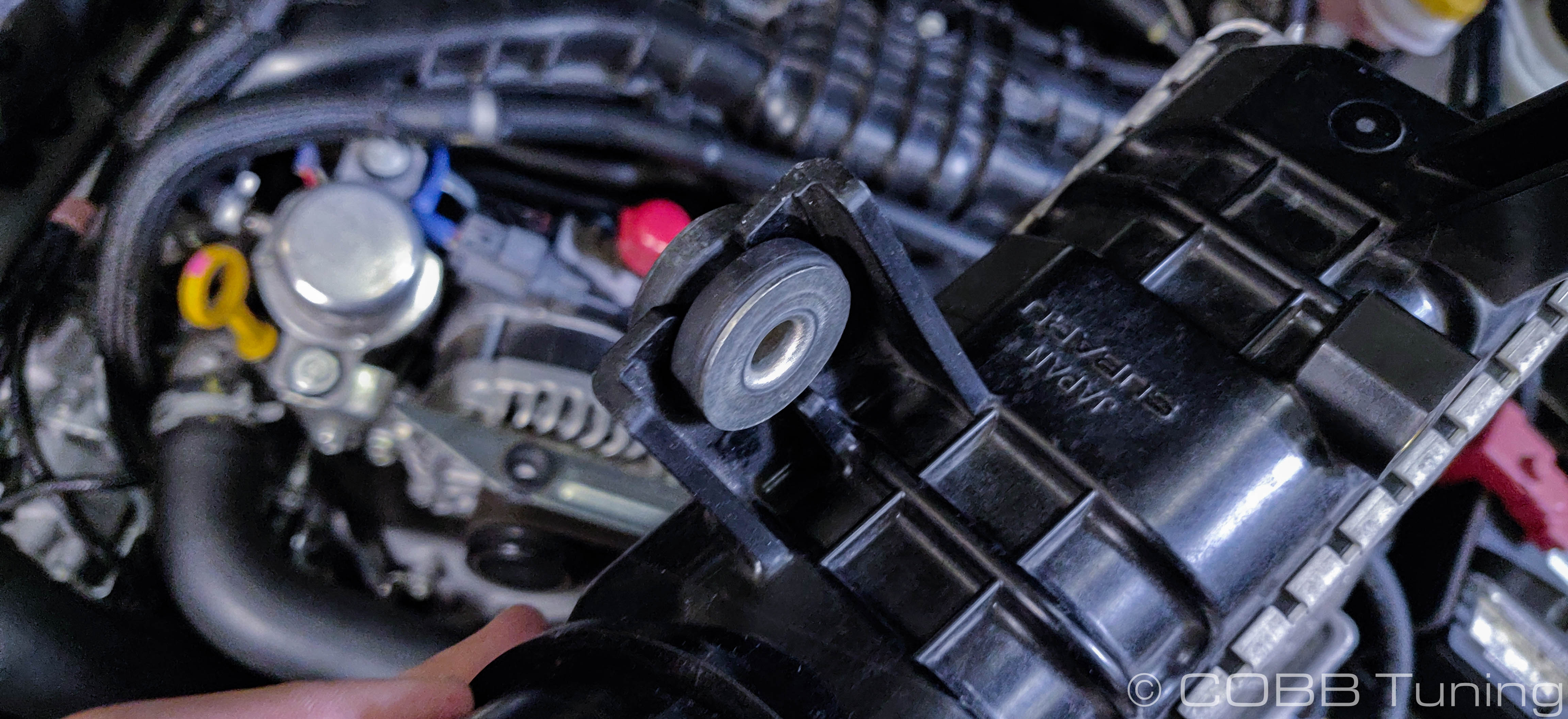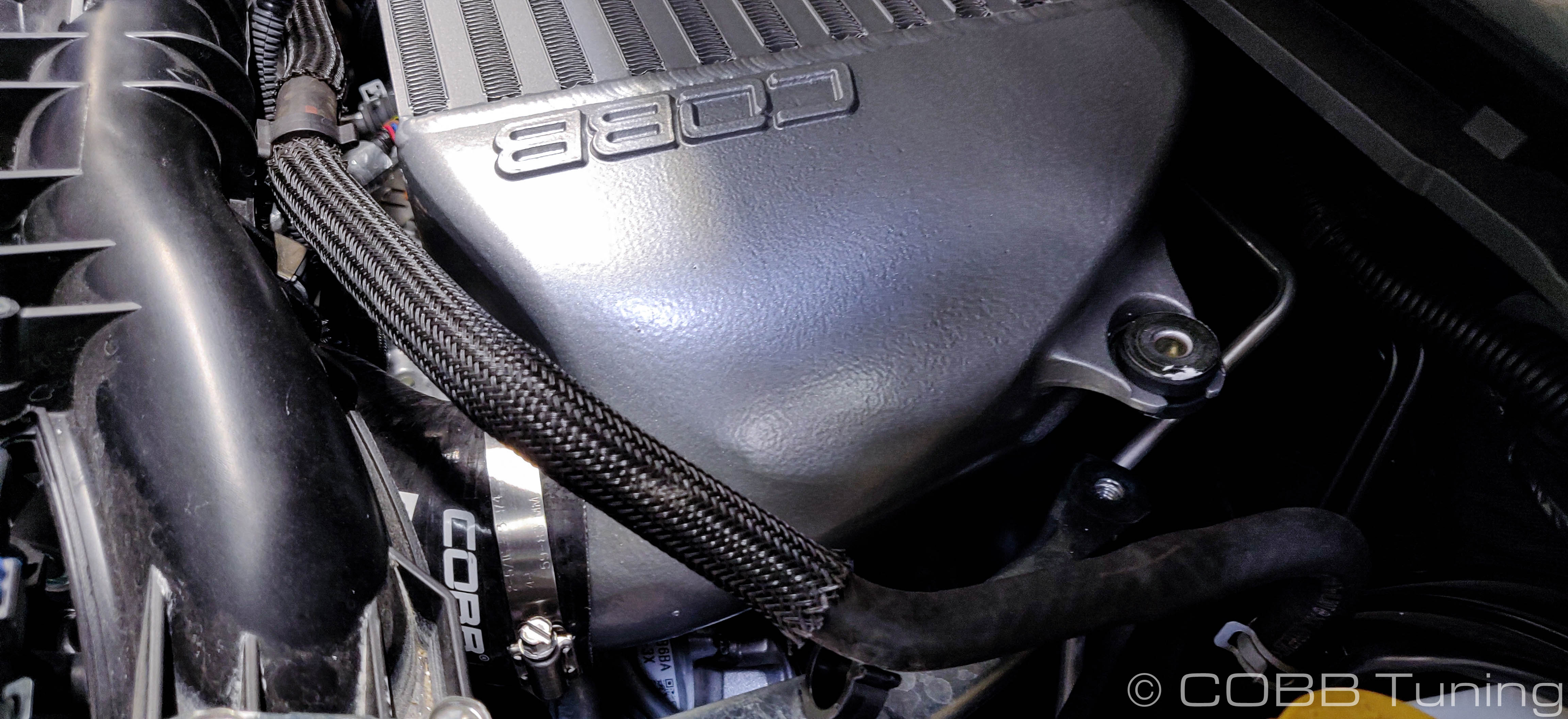B42405 – VA DIT WRX TMIC
B42405 – VA DIT WRX TMIC
Subaru WRX 2015 - 2021
Congratulations on your purchase of the COBB Tuning VA WRX Top Mount Intercooler! The following instructions will assist you through the installation process. Please read them BEFORE beginning the install to familiarize yourself with the steps and tools needed. If you feel you cannot properly perform this installation, we HIGHLY recommend you take the vehicle to a qualified and experienced automotive technician.
Table of Contents
Parts List
- COBB TMIC Core Assembly
- COBB Thrust Tunnel Back Assembly
- COBB Thrust Tunnel Side Panels
- DIT WRX Bracket Mount
- (2) DIT WRX Power Steering Computer Relocation Bracket
- Silicone TMIC Coupler
- 2.75" - 2.5" Coupler to COBB Charge Pipe
- (2) Prothane Bushings
- (1) Bushing Insert Pin
- 3' Rubber Flap Seal
- 842400-HW Hardware Kit
- M12 x 1.75mm nylon lock not
- M12 x 70mm Hex Head Bolt
- (15) M6x12 SS Black Oxide Button Head Bolt
- (2) Flanged Hex Nut 6mm
- (2) #44 Hose Clamps
Tools Needed
Sockets
3/8"
Hand Tools
Wrenches
Stock Intercooler Removal
Cooling Shround Installation
- To get to the plastic panels that direct airflow coming in from the hood scoop, we'll first need to remove the underhood insulation. Using a trim tool pull out the clips holding the insulation in place and set the clips and insulation somewhere safe.
- Next up remove the clips holding the plastic ducting to the underside of the hood. These clips come out a bit more easily than the ones holding the insulation in, you'll just need to gently pry upwards on the center section of the clip until it stops, then gently pry out the lower portion of the clip. There are two legs that sit inside of the hood on the rear of the ducting, so if you leave the forwardmost clips for last, it should support itself in place most of the time.
- The next goal is to remove the soft plastic portion of the ducting. To do so you'll use a small drill bit to remove the center portion of the plastic rivet so that the top and bottom pieces come free from eachother. While a bit around 1/8" works the best, make sure to use something smaller than 4mm to avoid making the hole any larger.
- To install the new ducting in place, we'll be using an allen bolt and plastic washer on one side, and a steel washer and locking nut on the other side.
- Using a 4mm allen wrench and 10mm wrench or socket, install thebottom portion of the ducting with seven towards the "top" with the steel nuts and washers facing outwards. The two in the bottom corners will be flipped the opposite direction. While the direction of the fasteners isn't critical, this will make it so that the allen side with the plastic washers is the side visible through the hood scoop or in the engine bay once everything is installed, and avoids the bright hardware catching someone's eye from outside the car.
- With the lower ducting portion installed, we can assemble the panel that will replace it. Set out the base panel that has the sides on it and slide the panel with the COBB logo into it on the inside of the sides. It should only fit one way.
- Use three of your m6 button headed cap screws along with a 4mm allen key to attach each side. It usually works best to get them all started by hand before you tighten them down.
- Take the provided trim lock and measure and cut out pieces to fit on each face of the duct. This should provide a better seal against the intercooler.
- You can now re-install the shroud and underhood insulation using the factory trim clips.
Power Steering Control Module Relocation
15-16 modules have a power steering control module in this location. For 17-18 models you won't have to tackle the wiring or control unit, however the black metal bracket will still need to be removed.
Customers using the COBB Air Oil Separator for this vehicle won't need to perform this step as it has already been relocated.
On the rear passenger's side (USDM) of the vehicle's engine bay. Locate this control module. Carefully disconnect the various connectors on it.
The wires going to the control module are designed to move a significant amount of current. You MUST disconnect the battery prior to removing these connectors or risk damage to yourself or the vehicle.
- Remove the grey connector from the bracket mounted on the control unit. The bracket can be removed with a 12mm socket and set aside.
- Unbolt the top and bottom bolts on the control unit using a 10mm socket and set the unit somewhere safe.
- On the top and bottom studs you'll now install the supplied bracket. The stud should point towards the engine and be on the side of the bracket facing towards the rear of the car. Loosely install the nut on to the factory stud.
- Position the module on the new studs coming off of the bracket and attach it using the factory nuts. Once those are tight you can go ahead and tighten the nuts holding it to the stock bracket.
- Go ahead and re-connect the factory connectors to the module at this time.
TMIC Installation
- Remove the two 14mm bolts holding the passenger's side bracket for the stock intercooler in place. These should be just in front of where the engine block connects to the transmission.
- Install the two provided bushings into the new support bracket. The skinnier portion of the bushings will go in towards the center of the bracket and the pin should sit between the two. If you can get the bushings started, using a vice can help get the bushings in the rest of the way before installing the pin.
- This bracket can now get installed onto the same two holes you previously removed the factory bracket from using the stock bolts.
- Using your screwdriver remove the factory throttle body coupler underneath the drivers side of the intake manifold. Replace it using the provided hose clamp and the new coupler. The oddly shaped bump of the coupler should face down.
- Slip another hose clamp over that coupler so that it will be in place when we put the new intercooler in.
- On one side of the stock intercooler, remove the grommet and metal insert That can then be installed on the driver's side of the COBB intercooler. Make sure the flat portion of the insert faces up.
- The intercooler can now get installed. Carefully tip it in to place in the throttle coupler first, then down onto the bushings of the newly installed bracket.
- Take the large provided bolt and nut and gently wiggle the intercooler up and down to feed the bolt through the bracket and bushing, then attach the nut on the other end. It can be tightened down using a combination of a 17mm and 18mm socket/wrench.
- Go ahead and tighten down the hose clamps on the throttle body coupler, then re-install the driver's side factory intercooler bracket.
- Using the provided 2.5" - 2.75" coupler, install it on the other end of the top mount intercooler. The intercooler side will get the #44 hose clamp from the charge pipe kit which can be tightened down at this time. Loosely set the #32 clamp from the charge pipe kit over the coupler in preparation for the charge pipe.
Charge Pipe Installation
- At this point follow the instructions on how to install our charge pipe.
742110 - VA WRX Charge Pipe - You're all done! Go out and enjoy
CARB Sticker Application
(Where Applicable)
- Apply the supplied CARB sticker in a clear, easy to find location. Typically underhood, or on the radiator core support.
Links
COBB Customer Support Web Support and Tech Articles: COBB Tuning Customer Support Center Email: support@cobbtuning.com Phone support available 9am to 6pm Monday-Thursday. 9am to 4pm Friday (CST) 866.922.3059 return to www.cobbtuning.comContact Us:
Related content
Copyright 2025 © COBB Tuning Products LLC. All Rights Reserved. | www.cobbtuning.com

.jpg?version=2&modificationDate=1623362570649&cacheVersion=1&api=v2&width=600&height=600)

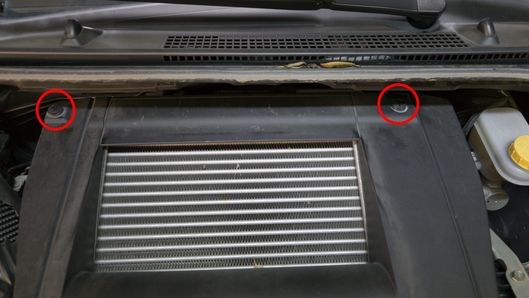

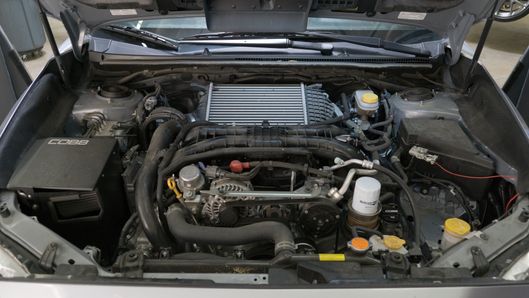










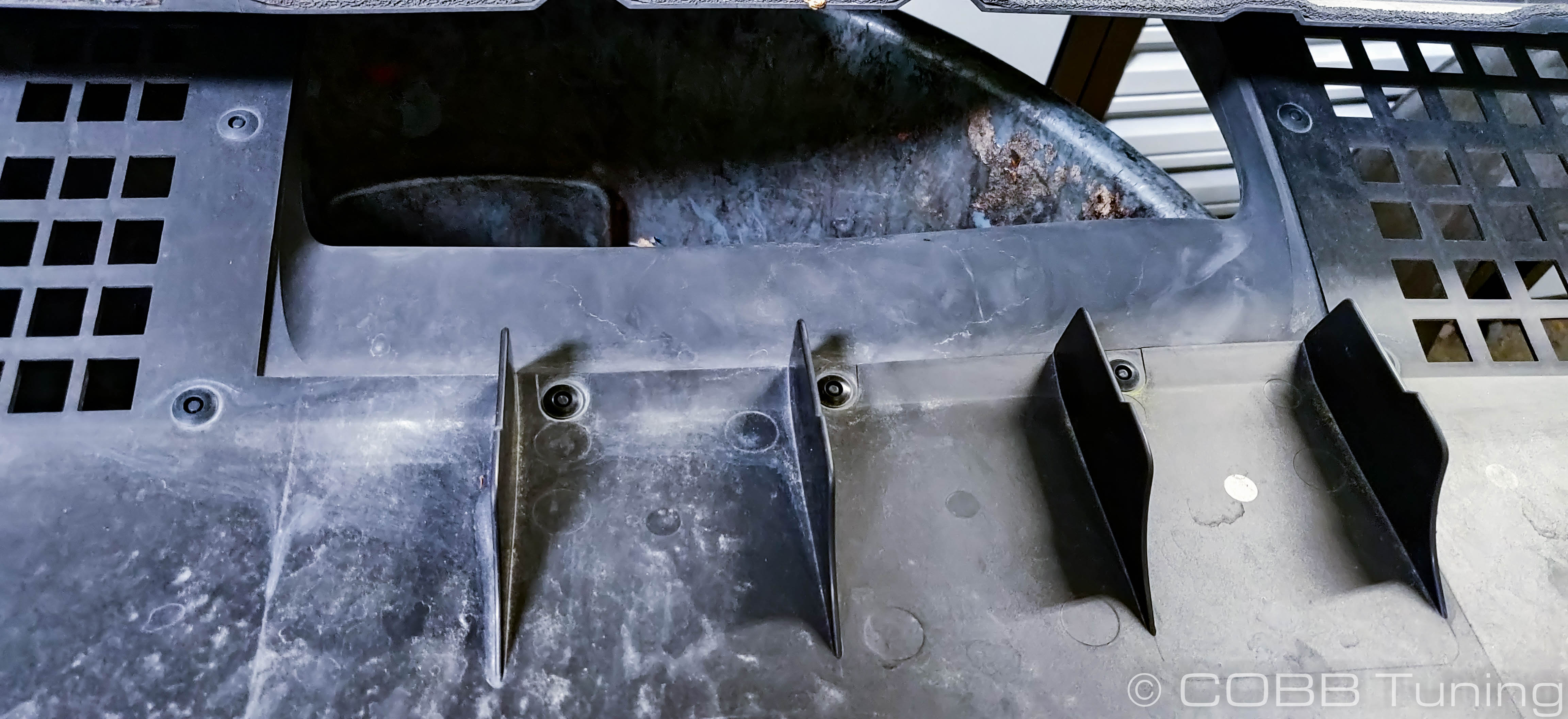











.jpg?version=1&modificationDate=1593208874653&cacheVersion=1&api=v2&width=120&height=261)






